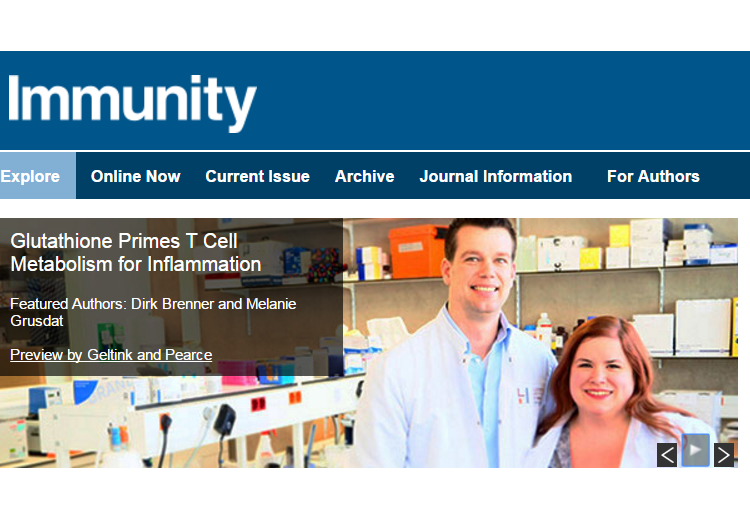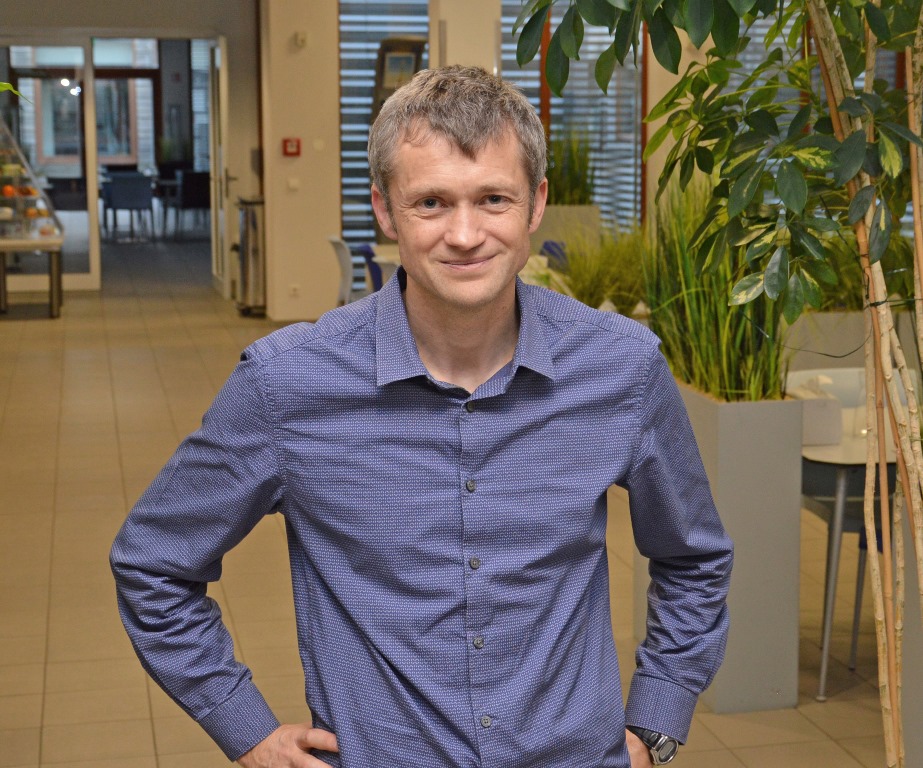Scientists at the Luxembourg Institute of Health (LIH) have discovered a previously unknown way in which our immune system activates its immune cells. The team, led by FNR ATTRACT Fellow Prof Dr Dirk Brenner, found that a molecule called ‘glutathione’ boosts the energy metabolism of a type of white blood cells known as T-cells, giving them more power to fight off e.g. viruses. The novel findings – which could lead to new treatments for cancer and autoimmune diseases – have just been published in ‘Immunity’, the world’s most prestigious immunology journal.
T-cells are a specific type of white blood cells, which play an important role in the immune system, as they attack virus-infected cells, foreign cells, and cancer cells.
“Our body has to keep our immune system in a carefully balanced equilibrium. If the body’s innate defences are overactive, then they turn against the body. This is what happens in autoimmune diseases like multiple sclerosis or arthritis, for example. If they are too weak, then infections cannot be controlled or body cells can proliferate uncontrolled and grow to form tumours, which can become life-threatening” – Dirk Brenner, FNR ATTRACT Fellow, Head of Experimental & Molecular Immunology Laboratory, LIH
The ‘normal’ state of immune cells, such as T-cells, is alert hibernation, meaning they are ready to jump into action, but their energy consumption is minimal. If pathogens (for example a virus), attach to the outer envelope of these cells, the T-cells wake up and boost their metabolism. This process creates larger amounts of ‘metabolic waste’, which can be toxic for the cells.
The higher the concentration of metabolic waste, the more antioxidants the T-cells have to produce to avoid being poisoned. These antioxidants, such as ‘glutathione’, serve as waste collectors and help to get rid of the metabolic waste, such as free radicals.
Prof Dr Brenner and his group were the first to ever take an in-depth look at what these antioxidants in T-cells actually do – what they found: The antioxidant glutathione does more than just collect metabolic waste: by boosting their energy metabolism, it actually helps the T-cells grow and divide, and so helps them spring into action to fight pathogens.

“These fascinating results form a basis for a targeted intervening in the metabolism of immune cells and for developing a new generation of immunotherapies” – Mark Ollert, Director of Department of Infection & Immunity at LIH
How was the discovery made?
A gene known as ‘GclC’ is instrumental in order for T-cells to be able to fight off viruses. The gene encodes a protein that is vital in the production of the antioxidant glutathione. For their investigations, the scientists used genetically modified mice in which the GclC gene had been removed from the T-cellls, meaning they were unable to produce the waste-collecting metabolism-boosting glutathione:
“In these mice, we discovered that the control of viruses is impaired – mice that lack the GclC gene have an immunodeficiency. But by the same token, this also meant the mice could not develop any autoimmune disease such as multiple sclerosis.” – Dirk Brenner
During further testing by Prof Brenner’s team, they discovered why the mice were less able to control viruses: “The mice cannot produce any glutathione in their T-cells and so a number of other signalling events that directly boost metabolism and increase energy consumption are lacking.” The team established that as a result of the lack of the antioxidant glutathione, the T-cells do not become fully functional, but remain in their state of hibernation instead.
What’s next?
Prof Dirk Brenner sees his T-cells experiments as a prelude to more in-depth investigation of the energy balance of immune cells in general. A number of different autoimmune diseases are related to malfunctions in various subgroups of T-cells. Prof Brenner explains that the situation is similar in cancer:
“It is important to know why the immune cells that are actually supposed to fight cancer cells drop to a low metabolic state and in some cases even actively suppress an immune response against the tumour. Counteractive metabolism-stimulating measures could make the immune cells work more efficiently and fight off the cancer more efficiently” – Dirk Brenner
The study involved close collaboration with Prof Karsten Hiller (former FNR ATTRACT Fellow) from the University of Luxembourg, now Director of the Department of Bioinformatics and Biochemistry at the University of Braunschweig, as well as Prof Tak W. from the University of Toronto, Canada.
Publication

Link to publication: ‘Glutathione Primes T Cell Metabolism for Inflammation‘ (open access)
Published 19 April 2017
SEE ALSO..
Introducing FNR ATTRACT Fellow Dirk Brenner
RELATED PROGRAMMES
RELATED NEWS












